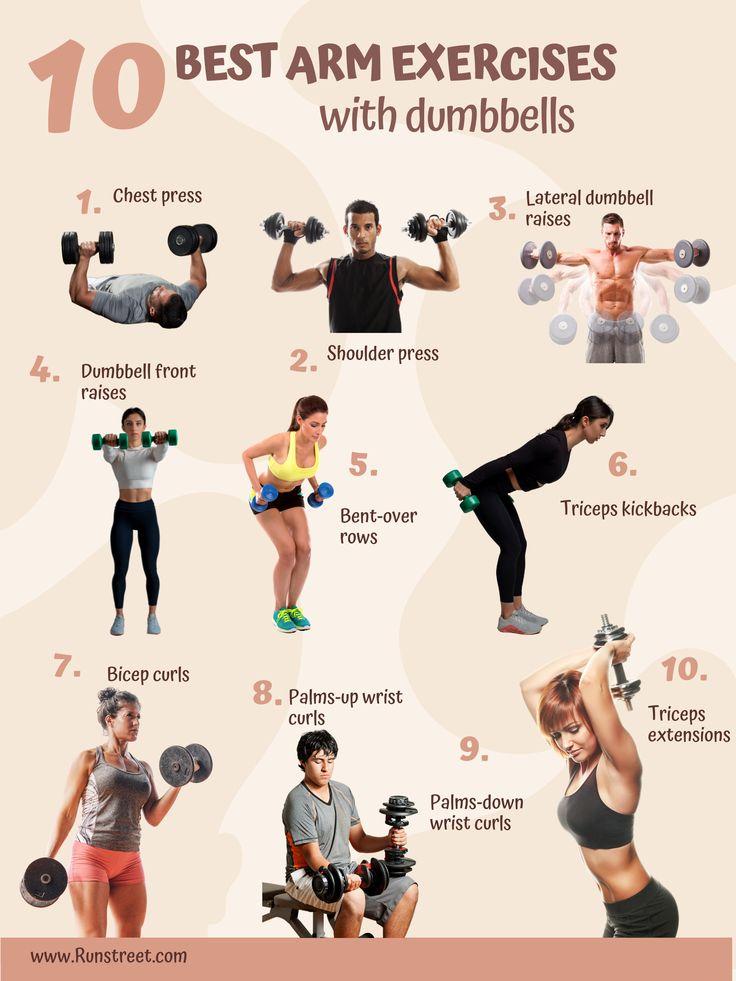When it comes to building a strong, defined upper body, few muscle groups garner as much attention as the arms. Whether you’re aiming to boost your overall strength or sculpt lean, chiseled biceps and triceps, effective arm workouts are essential. However, achieving both power and definition requires more than just random exercises—it demands a strategic approach grounded in proper technique, balanced muscle engagement, and progressive overload. In this article, we’ll explore proven arm training methods designed to maximize strength gains while carving out impressive muscle definition, helping you take your fitness routine to the next level.
Table of Contents
- Fundamental Muscle Groups Targeted in arm Training
- Optimizing Workout Techniques for Maximum Strength Gains
- Incorporating Progressive Overload to Enhance Muscle Definition
- Balancing Arm Workouts with Recovery and Nutrition strategies
- The Conclusion
Fundamental Muscle Groups Targeted in Arm Training
When aiming for sculpted and powerful arms, understanding the key muscle groups involved is crucial. The biceps brachii are typically the primary focus, responsible for the flexion of the elbow and the supination of the forearm. Complementing the biceps are the brachialis and brachioradialis, which assist in elbow flexion and add depth and thickness to the arm’s overall appearance. On the opposing side, the triceps brachii dominate, executing elbow extension and shaping the back of the arm. Neglecting the triceps can compromise arm strength and symmetry.
Additionally, the forearm muscles play a supportive yet vital role in gripping and wrist movement, enhancing both the functionality and aesthetic of the arm. Key muscles include:
- Flexor group: Enable wrist and finger flexion, essential for grip strength.
- Extensor group: Facilitate wrist and finger extension, improving wrist stability.
- Pronators and supinators: Control the rotation of the forearm, allowing for versatile movement.
Effective arm training meticulously targets these muscles to balance strength, endurance, and definition.
Optimizing Workout Techniques for Maximum Strength Gains
Maximizing strength gains requires more than just lifting heavier weights; it demands precision and intentionality in form and movement. Emphasizing controlled eccentric phases—the lowering part of a lift—can significantly enhance muscle fiber recruitment and promote hypertrophy. Additionally, integrating compound movements such as close-grip bench presses and weighted chin-ups targets multiple muscle groups concurrently, generating greater overall strength improvements. Ensuring proper posture, avoiding momentum, and maintaining a steady tempo during each repetition are indispensable habits for reducing injury risk while maximizing muscle activation. Remember, quality trumps quantity when optimizing for strength.
Another critical factor lies in recovery strategies and progressive overload programming. incorporating adequate rest intervals between heavy sets allows the nervous system and muscles to recuperate, enabling sustained high performance throughout your workout.It’s also essential to track progress meticulously and gradually increase resistance or volume to continually challenge the muscles without tipping into overtraining. Consider supplementing your routine with accessory exercises like hammer curls or reverse barbell curls to strengthen supportive muscle groups, promoting balanced arm progress and preventing muscular imbalances that could hinder long-term strength gains.
- Controlled tempo: Slow down the eccentric phase for better muscle engagement.
- Compound lifts: Use multi-joint exercises to maximize overall strength.
- Proper rest: Allow 1-3 minutes between heavy sets based on intensity.
- progressive overload: Increase weight,reps,or sets steadily over time.
- Accessory work: Target supportive muscles to improve arm function and balance.
Incorporating Progressive Overload to Enhance Muscle Definition
To maximize muscle definition and strength gains, it’s essential to progressively challenge your muscles beyond their usual capacity. This can be accomplished by consistently increasing variables such as weight,reps,or intensity in your workouts. Progressive overload not only stimulates muscle hypertrophy but also fosters improved endurance and neural adaptation. Without this incremental challenge, muscles quickly adapt, leading to plateaus and stalled progress.
Implementing this strategy involves systematic adjustments that can take several forms:
- Incremental weight increases: Gradually add more resistance to your sets to push muscle fibers harder.
- Volume manipulation: Add more sets or reps to extend time under tension.
- Reduced rest intervals: Shortening breaks intensifies workout density and metabolic stress.
- Advanced techniques: Incorporate drop sets, supersets, or tempo variations to continuously challenge muscles.
Tailoring these elements with consistency ensures your arm workouts evolve over time, ultimately sculpting more defined, stronger muscles.
Balancing Arm Workouts with Recovery and Nutrition Strategies
To maximize gains from arm training, it’s essential to integrate proper recovery protocols alongside your workout regimen. Muscular growth and strength improvements primarily occur during rest periods, so neglecting recovery can lead to overtraining and increased injury risk. prioritize quality sleep, active rest days, and strategic deload weeks to allow your muscles to heal and adapt. Incorporating techniques like foam rolling and gentle stretching can reduce muscle tightness, enhance circulation, and accelerate recovery, ensuring you maintain consistent progression without burnout.
Equally crucial is the implementation of targeted nutrition strategies that support muscle repair and energy replenishment. Optimize your diet with a balance of lean proteins, complex carbohydrates, and healthy fats to fuel intense workouts and speed up muscle synthesis.Consuming protein-rich meals or shakes within the post-workout window helps provide essential amino acids needed for repair.additionally,staying well-hydrated and incorporating micronutrient-rich foods,such as leafy greens and berries,will aid in reducing inflammation and supporting overall muscular health.
- Recovery essentials: sleep 7-9 hours, active rest, foam rolling
- Nutrition focus: lean protein, complex carbs, antioxidants
The Conclusion
Incorporating effective arm workouts into your fitness routine is essential for building both strength and definition. by focusing on targeted exercises and maintaining consistent training, you can achieve balanced muscle development that supports overall functional fitness. Remember, progress takes time and dedication, so stay patient and listen to your body as you push toward your goals. With the right approach and persistence, stronger, more defined arms are well within your reach.

